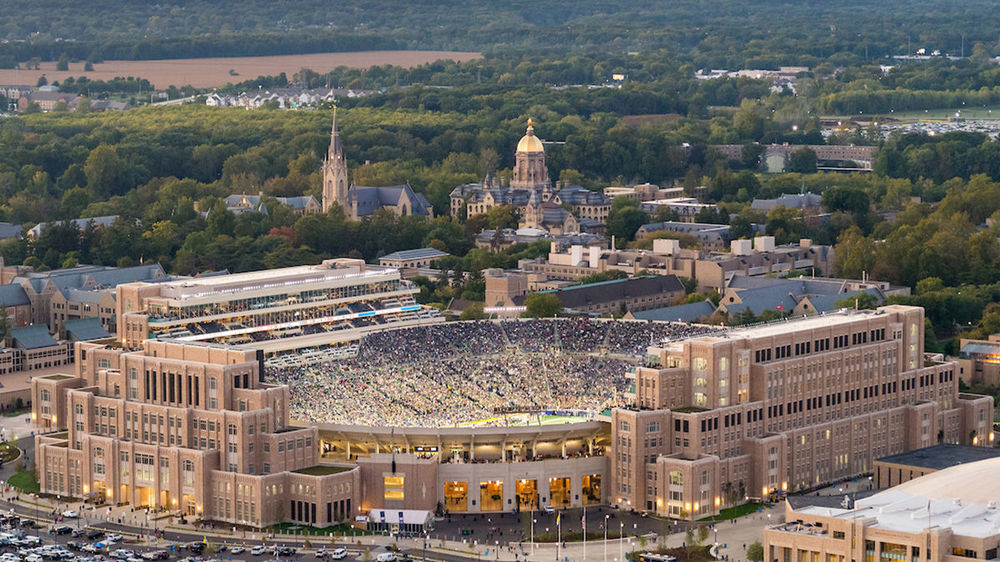The U.S. Green Building Council has awarded the University of Notre Dame with LEED (Leadership in Energy and Environmental Design) Gold certification for the design, construction and operation of the three buildings surrounding Notre Dame Stadium — Duncan Student Center, Corbett Family Hall and O’Neill Hall.
With a total of 10 stories in each building and 830,000 square feet, the facilities bring together academics — the departments of Anthropology, Music and Psychology — as well as Athletics and Student Life with custom classroom, performance, research, media, recreation, event and hospitality space.
The University earned 60 credits in nine categories including the use of sustainable materials and resources, water efficiency, energy, innovation in design and indoor environmental quality, among several other areas. Throughout the construction of the project, more than 20 percent of the building materials consisted of post-consumer and pre-consumer recycled content and more than 20 percent of materials were manufactured or harvested regionally.
Because of water efficient plumbing fixtures in bathrooms, showers and kitchens, the amount of water used is 35 percent less than in standard new construction. In total, the three buildings are 18 percent more energy efficient than standards. High-efficiency, thermal envelope insulation in the walls and roofs, a high-efficiency central fan system and high-performance window glass glazing reduces the energy consumption. In addition, by using electricity from the University’s central power plant, the facilities take advantage of the efficiencies of the co-generation plant and avoid transmission losses of a public utility grid that can be as high as 85 percent.
Boasting one of the largest green roofs in Indiana, the living roofs cover nearly all of the flat roof surfaces of the three buildings and serve to mitigate stormwater runoff, improve air quality, reduce noise, provide additional insulation and reduce heating and cooling energy loads.
The interiors were carefully and sustainably designed as well. LED lighting reduces energy consumption by up to 50 percent compared to conventional lighting, and room lighting controls combined with occupancy sensors enable occupants to control the amount of lighting used and conserve energy when possible. All paints and coatings comply with the Green Seal standard, and all carpets meet Green Label Plus standards.
In addition, much of the waste has been diverted from landfills. During the construction of the building, more than 75 percent of the waste was recycled including concrete, metals, wood, cardboard, drywall and other materials, and since the building has been in use, occupants have been encouraged to recycle.
Since 2011, the University of Notre Dame has been committed to following LEED standards for all new construction. The University has earned 10 LEED Gold certifications including this one and five LEED Silver certifications. In addition to saving energy and resources, LEED buildings contribute to a greener, more sustainable environment for generations to come.
Originally published by at news.nd.edu on April 20, 2020.
